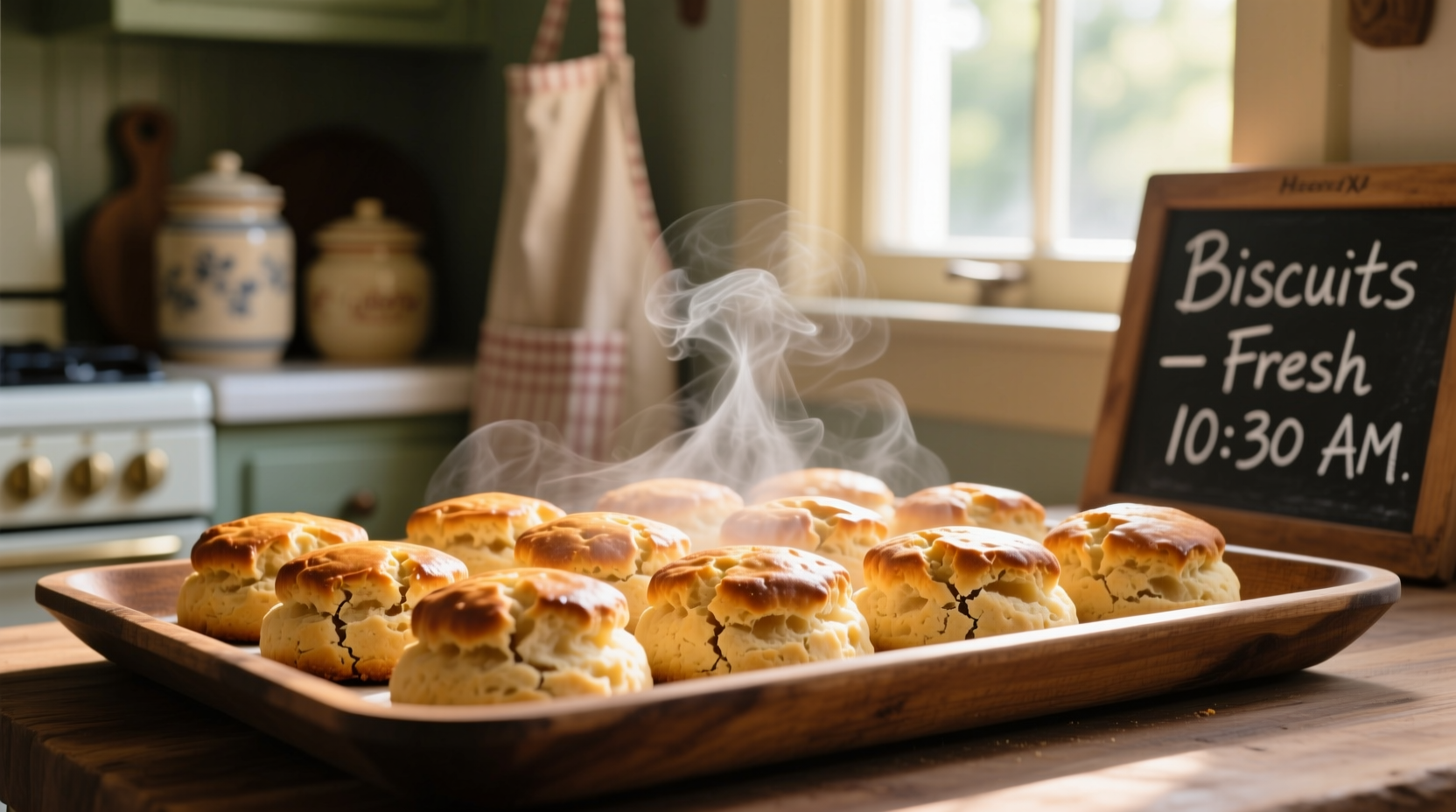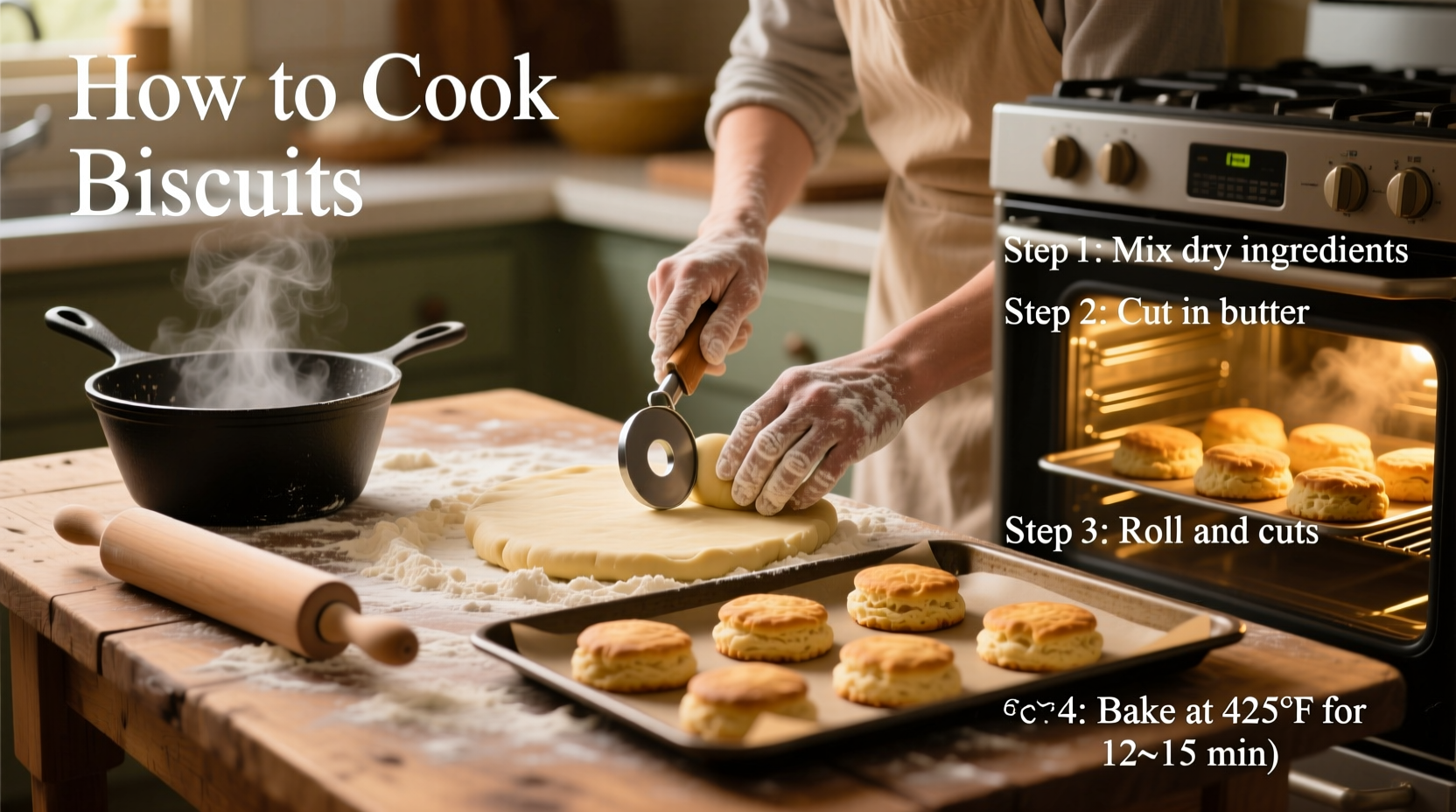Creating perfect biscuits starts with understanding the fundamental principle: minimal handling and cold ingredients. The ideal biscuit recipe uses a 3:1:1 ratio of flour to fat to liquid, with baking powder providing the primary leavening. When executed properly, biscuits should reach an internal temperature of 200°F (93°C) with a golden-brown exterior and flaky interior layers.
Essential Tools and Equipment Checklist
Before you begin, gather these critical tools that make a significant difference in your biscuit outcome:
- Pastry cutter or food processor (for fat incorporation)
- Freezer-chilled mixing bowl
- Steel bench scraper (for clean folding)
- Oven thermometer (critical for accurate baking)
- 40-50°F (4-10°C) workspace temperature
Understanding Biscuit Ingredients: The Science Behind Success
The magic of biscuits happens through precise ingredient interactions. Professional bakers follow these evidence-based guidelines:
| Fat Type | Melting Point | Flakiness Score | Flavor Profile | Best For |
|---|---|---|---|---|
| Unsalted Butter | 90-95°F (32-35°C) | 8/10 | Rich, dairy notes | Flavor-focused biscuits |
| Vegetable Shortening | 115-117°F (46-47°C) | 9.5/10 | Neutral | Maximum height/flakiness |
| Lard | 110-120°F (43-49°C) | 9/10 | Savory, clean | Traditional Southern biscuits |
According to USDA FoodData Central research, the higher melting point of shortening creates more defined layers as it remains solid longer during baking, while butter's lower melting point produces superior flavor but requires stricter temperature control. For optimal results, many professional bakers use a 50/50 butter-shortening blend.
Step-by-Step Biscuit Preparation Process
1. Temperature Control: The Critical First Step
Cold ingredients are non-negotiable for flaky biscuits. Place your flour in the freezer for 30 minutes before starting. Cut your fat into 1/2-inch cubes and return to the freezer for 15 minutes. Chill your liquid (buttermilk or milk) thoroughly. This temperature management prevents premature fat melting, which is essential for creating those desirable flaky layers.
2. Proper Fat Incorporation Technique
Using your pastry cutter or food processor, work the fat into the flour until you achieve distinct pea-sized pieces. This process should take no more than 60 seconds. America's Test Kitchen research shows that over-processing creates a mealy texture rather than flaky layers. Stop when 70% of the fat pieces are pea-sized and 30% are smaller.

3. Liquid Addition and Minimal Mixing
Pour in your chilled liquid all at once. Using a rubber spatula, gently fold the mixture just until it comes together—typically 8-10 folds. The dough should remain shaggy with visible streaks of fat. Overmixing develops gluten, which creates tough biscuits. The ideal biscuit dough contains approximately 35% moisture content for optimal rise and texture.
4. Shaping Methods for Maximum Rise
Professional bakers use two effective shaping techniques:
- Fold-and-Roll Method: Gently press dough into a 1-inch thick rectangle, fold in thirds like a letter, rotate 90 degrees, and repeat. This creates 18-24 distinct layers.
- Biscuit Cutter Method: Pat dough to 1-inch thickness and cut straight down without twisting. Place cut biscuits touching each other on the baking sheet to encourage upward growth.
Context-Specific Baking Adjustments
Your baking environment significantly impacts results. These context boundaries ensure success regardless of your kitchen conditions:
- High Altitude (above 3,000 ft): Reduce baking powder by 1/8 teaspoon for every teaspoon called for and increase liquid by 2-4 tablespoons.
- Humid Conditions: Reduce liquid by 1-2 tablespoons and chill dough for an additional 10 minutes before baking.
- Cold Kitchens (below 65°F/18°C):
- Warm Kitchens (above 75°F/24°C): Work quickly and consider chilling your baking sheet before use.
Troubleshooting Common Biscuit Problems
Even experienced bakers encounter issues. Here's how to fix the most frequent biscuit problems:
Dense or Heavy Biscuits
Cause: Overmixing, warm ingredients, or expired leavening. Solution: Check baking powder freshness (mix 1 tsp with 1/3 cup hot water—it should bubble vigorously), ensure all ingredients stay cold, and mix minimally.
Flat or Spreading Biscuits
Cause: Too much fat, insufficient flour, or warm dough. Solution: Measure flour correctly (spoon and level, don't scoop), chill shaped biscuits for 10 minutes before baking, and verify your fat-to-flour ratio.
Perfect Baking Parameters
Preheat your oven to 425°F (220°C) with a rack in the upper third position. Bake for 12-15 minutes until golden brown. The critical temperature milestone occurs at 190°F (88°C) internal temperature when starch gelatinization completes and the structure sets. Remove biscuits when they reach 200°F (93°C) internal temperature for optimal texture.
For the best eating experience, serve biscuits within 20 minutes of baking. As Smithsonian food science research shows, the window for peak biscuit texture closes rapidly as moisture redistributes within the crumb structure.
Biscuit Evolution Timeline
Biscuits have evolved significantly through American culinary history:
- Pre-1800s: Hardtack biscuits served as durable ship provisions during long voyages
- 1831: Introduction of baking soda revolutionized quick breads
- 1856: Commercial baking powder development enabled consistent rise
- Early 1900s: Southern cooks perfected the flaky buttermilk biscuit technique
- 1930s: Refrigerated biscuit dough made commercial debut
- Present Day: Artisanal bakeries focus on reviving traditional techniques with premium ingredients
This historical progression, documented by the Smithsonian National Museum of American History, shows how technological advances transformed biscuits from basic sustenance to culinary art.
Storage and Serving Recommendations
For optimal freshness, store cooled biscuits in an airtight container at room temperature for up to 2 days. Reheat in a 350°F (175°C) oven for 5-7 minutes to restore crispness. Freezing is preferable to refrigeration, as cold temperatures accelerate starch retrogradation that causes staling.
Traditional pairings include sausage gravy, honey, or pimento cheese. For contemporary variations, try serving with bourbon-infused maple syrup or smoked tomato jam.











 浙公网安备
33010002000092号
浙公网安备
33010002000092号 浙B2-20120091-4
浙B2-20120091-4